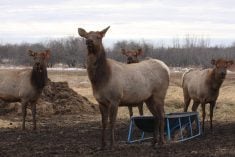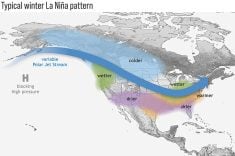Biologists from the University of Florida have determined that pocket gophers dig their tunnels so they can harvest roots
New research from the University of Florida suggests gophers could be farmers.
Not traditional farmers who plant seeds and harvest the crop, but farmers who maintain a large and complex system of tunnels, so they can feed on the roots that grow in the tunnels.
“Southeastern pocket gophers are the first non-human mammalian farmers,” Jack Putz, a University of Florida biology professor, told ScienceDirect.com. “Farming is known among species of ants, beetles, and termites, but not other mammals.”
Putz and his graduate student, Veronica Selden, studied pocket gophers that live next to Putz’s home in Florida.
Read Also

Canadian Food Inspection Agency extends chronic wasting disease control program consultation deadline
Date extended for consultation period of changes to CWD program
In a paper published July 11 in Current Biology, the biologists argue that pocket gophers are farmers because digging massive tunnels requires an immense amount of energy. So, the gophers must be doing it for a reason.
“Burrowing is 360 to 3,400 times more energetically costly than surface walking. Pocket gophers have high energy requirements,” the abstract for the paper says.
The biologists say the gophers dig sprawling tunnels, up to 150 metres long, so roots can grow into the tunnels. In a way, the gophers are operating “root farms.”
“They (the biologists) discovered that digging a tunnel costs far too much energy (to eat the newly excavated roots),” the University of Florida said in a release. “But, by harvesting the roots that grow into already-dug tunnels over time, the gophers can gain enough energy to keep digging tunnels in search of more food.”
Put another way, the pocket gophers dig a tunnel and return at a later date to “harvest” the roots that grow into the tunnel. Plant roots are a major source of food for gophers.
The scientists tested their theory with 50-gallon drums, with the ends cut off. The installed the drums in the soil to surround a gopher tunnel. That kept the gophers out and allowed the roots to grow into the tunnel.
The biologists then measured the volume of roots that grew into the tunnel and how much food that creates for the pocket gophers.
They discovered that root growth could provide the gophers with 20 to 60 percent of their energy needs, “which helps make up for the intense energy cost of burrowing in dense soil.”
Digging tunnels and waiting for roots to grow is very different from planting seeds in the soil. But the activity could be defined as “farming”.
“Pocket gophers neither sow nor weed their crops. Indeed, while the gophers clearly harvest their crops of roots to survive, and take steps to defend and promote their crops, the new study reveals that the definition of ‘farming’ is far from clear,” the University of Florida release said.
Selden, the graduate student, said the scientific debate on what constitutes farming may shine a needed light on gophers.
“Pocket gophers are a lot more interesting than people give them credit for. They’re really important ecosystem engineers,” she said. “They deserve more attention.”
Pocket gophers are found across North America and seldom come to the surface. The most common species is the plains pocket gopher, found throughout the Great Plains region, says the National Wildlife Federation. Richardson ground squirrels are commonly called gophers but are a different animal.
Several other species are found in the U.S. West and Southeast.
















